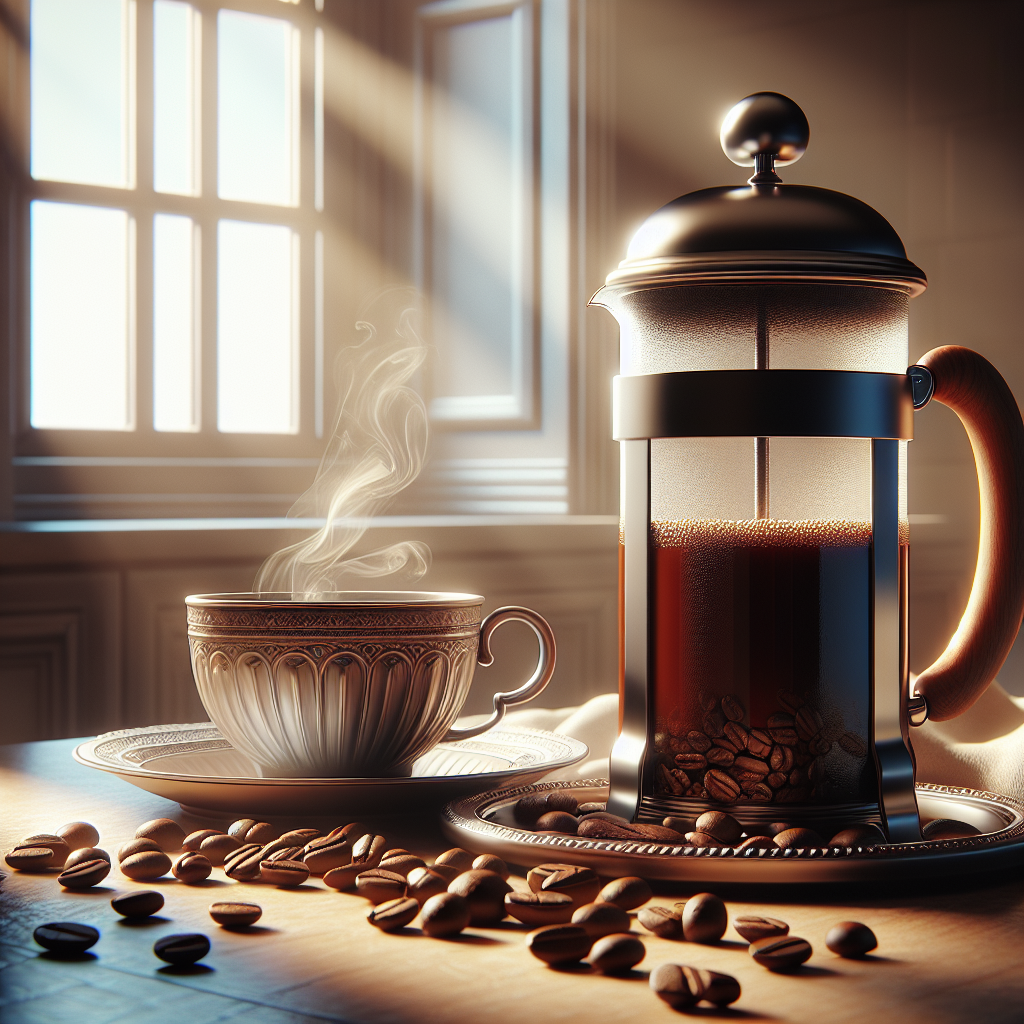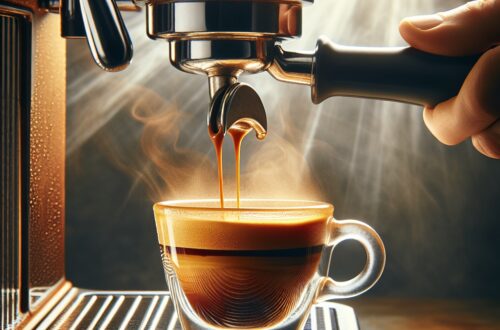“`html
The Best Way to Brew Coffee at Home: A Comprehensive Guide
Brewing coffee at home can be an incredibly rewarding experience. From selecting the perfect beans to mastering your preferred brewing method, every step of the process contributes to the final cup of coffee that can rival any café offering. In this guide, we’ll delve into the essential aspects of home coffee brewing to help you make the best cup of coffee every time.
1. Choosing Quality Coffee Beans
SEO Keyword: Quality Coffee Beans
Your journey to the perfect cup of coffee starts with selecting high-quality coffee beans. The freshness of whole bean coffee plays a crucial role in flavor. Avoid pre-ground coffee as it loses flavor quickly; instead, purchase whole beans roasted recently. You can usually find the roast date on the packaging, and it’s recommended to use the beans within several weeks of this date.
When it comes to roast profiles, there are three main types: light, medium, and dark. Light roasts tend to highlight the natural flavors of the coffee cherry, medium roasts offer a balance of natural flavors and roasted notes, while dark roasts deliver a robust, smoky taste. Understanding the origin and flavor notes of your beans can also enhance your coffee experience.
To maintain freshness, store your beans in an airtight container away from heat, light, and moisture. Consider buying from reputable local roasters or online specialty retailers. Organic and non-organic beans are also available, with organic beans often providing environmental benefits. Specialty coffee beans, typically rated higher in quality, can offer unique and exquisite flavors worth exploring.
2. Investing in a Good Grinder
SEO Keyword: Coffee Grinder
The grinder you choose significantly impacts the quality of your brewed coffee. Burr grinders are preferred over blade grinders because they produce a consistent grind, which is crucial for proper extraction. Consistency in grind size ensures even brewing, preventing over or under-extraction of your coffee.
For different brewing methods, you may need to adjust the grind size. For instance, a coarse grind is ideal for French Press, while a fine grind works best for espresso. Grinding your beans just before brewing preserves the flavors and aroma, leading to a superior cup of coffee.
Regular maintenance and cleaning of your grinder are essential to keep it functioning correctly and prevent stale coffee residues. Several top brands like Baratza or Breville offer reliable burr grinders with various settings and price points. Calibrating your grinder according to the brewing method will ensure optimal performance.
3. Using the Correct Brew Ratio
SEO Keyword: Coffee Brew Ratio
A commonly recommended brew ratio for coffee is one part coffee to 17 parts water. Using a kitchen scale for precise measurements can help achieve the ideal strength. A proper brew ratio ensures that the coffee is neither too strong nor too weak, providing a balanced and enjoyable flavor.
You can adjust the brew ratio to suit your taste preferences. For instance, use a 1:15 ratio for a stronger cup or a 1:18 ratio for a milder one. It’s also essential to consider the grind size and brew time when adjusting ratios, as these factors influence the final flavor.
Here are some examples to help you get started:
- Pour-Over: 18 grams of coffee to 300 grams of water
- French Press: 30 grams of coffee to 500 grams of water
- Espresso: 18 grams of coffee for a 36-gram yield
Measuring both coffee and water by weight using a scale ensures accuracy and consistency in your brewing process.
4. Selecting Your Brewing Method
SEO Keyword: Coffee Brewing Methods
There are numerous methods to brew coffee, each with unique characteristics. Here’s a comparison of popular brewing methods to help you decide which one suits your taste preferences and lifestyle:
| Method | Pros | Cons | Time |
|---|---|---|---|
| Pour-Over | Control over brewing time and flavor | Requires attention, can be messy | 2-4 minutes |
| French Press | Rich, full-bodied flavor | Can have sediment; longer steep time | 4 minutes |
| Aeropress | Quick and portable; easy cleanup | Requires specific technique for best flavor | 1-2 minutes |
| Drip Coffee Maker | Convenient; can brew multiple cups | Less control over brewing; can be average flavor | 5-10 minutes |
| Espresso Machine | Rich flavor; used for many coffee drinks | Expensive; requires practice | 30 seconds |
| Moka Pot | Strong flavor; stovetop convenience | Can be bitter if over-extracted | 5-10 minutes |
| Cold Brew | Low acidity; smooth flavor | Requires long steeping time | 12-24 hours |
For beginner-friendly methods, consider the French Press or Drip Coffee Maker. If you’re an enthusiast, experimenting with advanced techniques like Pour-Over or Aeropress can be rewarding. Each method requires specific equipment and has varying costs, so choose one that fits your needs and budget. For a deeper dive into each brewing technique, visit our Coffee FAQ section.
5. Mindful of Water Temperature
SEO Keyword: Coffee Water Temperature
The water temperature significantly impacts the extraction and flavor of your coffee. The optimal brewing range is between 195°F to 205°F (90°C to 96°C). Water that’s too hot can scorch the coffee, resulting in a bitter taste, whereas water that’s too cold may lead to under-extraction, yielding a weak and sour brew.
Using a thermometer or a temperature-controlled kettle can help you maintain the right temperature. For consistent results, preheat your brewing equipment and serving vessels. Also, be mindful that altitude affects boiling points, so adjustments might be needed based on your location.
Addressing temperature issues and troubleshooting common problems, such as inconsistent brew temperature, can significantly improve your coffee quality.
6. Pre-wetting Filters and Blooming Coffee
SEO Keyword: Pre-wetting Coffee Filters
When using paper filters in methods like Pour-Over or Drip brewing, pre-wet the filter with hot water. This step eliminates any paper taste that might affect the flavor and pre-warms the brewing vessel. Once you’ve placed your coffee grounds in the filter, add just enough hot water to saturate them, allowing the coffee to bloom for about 30 seconds. This process releases trapped carbon dioxide, enhancing extraction and flavor.
Using the right equipment, such as gooseneck kettles for precision pouring, can aid in pre-wetting and blooming. Different beans will require adjustments in blooming time, so experiment to find what works best for you.
7. Experimenting with Brew Time
SEO Keyword: Coffee Brew Time
Brew time is a critical factor in achieving the right extraction. Here are suggested brew times for popular methods:
- Pour-Over: 2-4 minutes
- French Press: 4 minutes
- Aeropress: 1-2 minutes
- Espresso: 25-30 seconds
Brew time affects extraction, so it’s vital to find the right balance to avoid over-extraction (which can result in bitter flavors) or under-extraction (leading to sour flavors). Experiment with grind size and water temperature to perfect your brew time. Keeping a brewing journal can help track changes and improvements over time.
8. Using Filtered Water and Adjusting for Personal Preferences
SEO Keyword: Filtered Water for Coffee
The quality of water used in coffee brewing is crucial. Using filtered water ensures that no off-flavors from tap water affect the coffee’s taste. The mineral content in water can also impact flavor, so experimenting with different water sources can yield interesting results.
Adjust brewing variables like grind size, brew time, and water temperature to suit your personal taste. Testing water quality and using home filtration systems can enhance the overall flavor profile of your coffee.
Conclusion: Mastering Your Coffee Brewing at Home
By understanding and optimizing each element of the coffee brewing process, you can master the art of making exceptional coffee at home. Choose quality beans, invest in a reliable grinder, use the correct brew ratio, and select a brewing method that fits your preferences. Paying attention to water temperature, pre-wetting filters, blooming coffee, and experimenting with brew times can further refine your skills. Finally, using filtered water and adjusting variables for your tastes will ensure consistently excellent results.
Continue to experiment, practice, and explore different methods. For more tips and in-depth explorations of coffee brewing, visit our Coffee FAQ for more resources and insights. Happy brewing!
“`
Shop at Breville now!
https://breville.oie8.net/oqDqrE
Shop Coffee Machine at Amazon now!
Click here!





